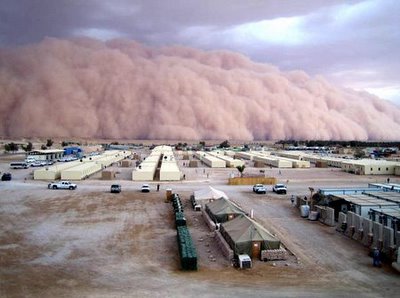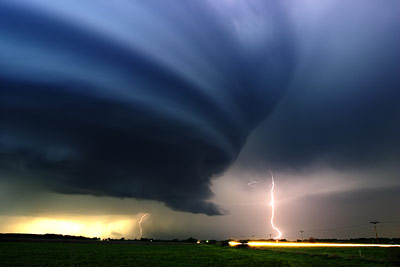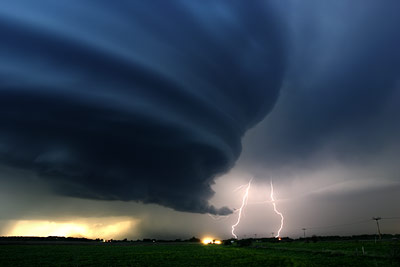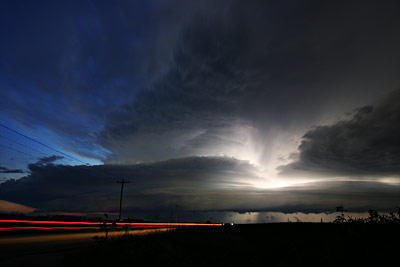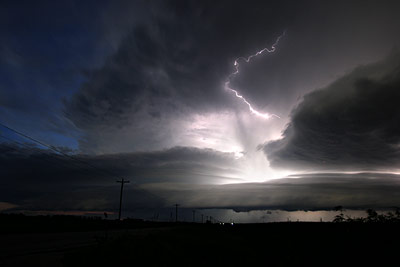Project 1: “How do you slow down a hurricane?”
In the June 2005 edition of The Economist Technology Quarterly (subscription required), we read about Moshe Alamaro, “a scientist at the Massachusetts Institute of Technology, [who] has a plan. Just as setting small, controlled fires can stop forest fires by robbing them of fuel, he proposes the creation of small, man-made tropical cyclones to cool the ocean and rob big, natural hurricanes of their source of energy. His scheme, devised with German and Russian weather scientists and presented at a weather-modification conference in April, involves a chain of offshore barges adorned with upward-facing jet engines.”
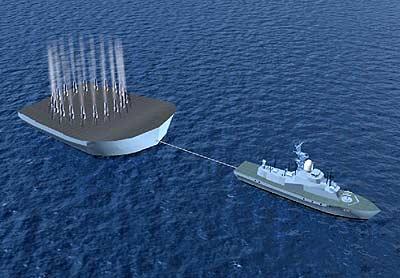
“Each barge creates an updraft, causing water to evaporate from the ocean’s surface and reducing its temperature. The resulting tropical storms travel towards the shore but dissipate harmlessly. Dr Alamaro reckons that protecting Central America and the southern United States from hurricanes would cost less than $1 billion a year. Most of the cost would be fuel: large jet engines, he observes, are abundant in the graveyards of American and Soviet long-range bombers.”
The creation of manmade tropical micro-storms, using heavy, greenhouse gas-burning jet engines towed through the waters of the equatorial Atlantic on what are, for all intents, artificial islands… is really a pretty ridiculous idea.
Yet it reminds me of a long-standing BLDGBLOG project that has otherwise gone unpublished. Till now:
Project 2: The Aeolian Reef
In Virgil’s *Aeneid*, translated by Robert Fitzgerald, we read about “Aeolia, the weather-breeding isle”:
“Here in a vast cavern King Aeolus
Rules the contending winds and moaning gales
As warden of their prison. Round the walls
They chafe and bluster underground. The din
Makes a great mountain murmur overhead.
High on a citadel enthroned,
Scepter in hand, he molifies their fury,
Else they might flay the sea and sweep away
Land masses and deep sky through empty air.
In fear of this, Jupiter hid them away
In caverns of black night. He set above them
Granite of high mountains – and a king
Empowered at command to rein them in
Or let them go.” (Book 1, Lines 75-89)
Thus: BLDGBLOG’s Aeolian Reef.
To be fair, this all began as nothing more than an idea for a new, artificial island that would be added to the Cyclades archipelago in Greece. It would be somewhere between Constant’s Babylonic mid-sea pavilion –
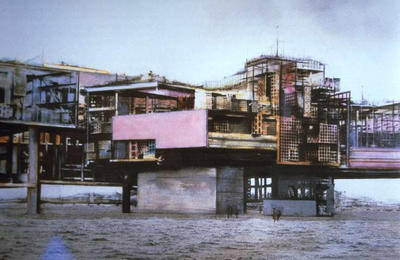
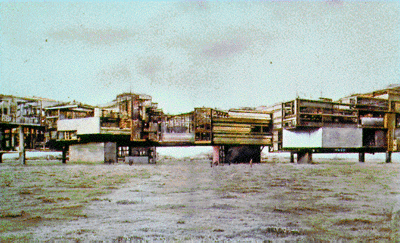
– an oil derrick –
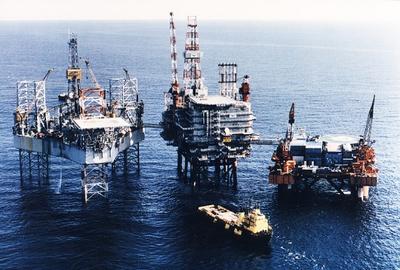
– the Maunsell Towers –
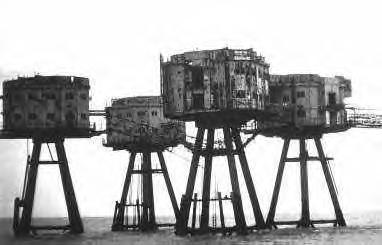
– and a kind of massive, off-shore, geotechnical saxophone.
Full of vaulted tubes and curved ampitheaters – and complex twists through a hollow, polished core – this modern Aeolia, an artificial island, would produce storms (and even, possibly, negate them).
A modern Aeolia, in other words, would be a “weather-breeding isle” – or a “weather-cancelling isle,” as the case may be: because then there was Katrina.
What would happen, I thought, if you built a manmade, weather-cancelling isle that could *stop hurricanes from forming*? I realized, of course, immediately, that you would actually need hundreds of these tuba-like, anti-hurricane islands – even an entire manmade archipelago of them – because the atmospheric paths of storms are far too unpredictable.
You would need, that is, an Aeolian Reef.
The Aeolian Reef – and the current author, who cannot draw, hint-hint, would *love* to collaborate with any BLDGBLOG readers who want to illustrate some of these things – would consist of oil derrick-like platform-islands built in climatologically influential patterns throughout both the Gulf of Mexico and the larger, equatorial Atlantic.
The Aeolian Reef would: 1) trap and redirect high-speed winds from any burgeoning tropical storms and hurricanes, thus preventing them from actually forming; 2) provide incredibly exciting meteorological/atmospheric observation platforms far out at sea; and 3) be readily exportable to other countries and other climates, for other purposes – land-based anti-tornado clusters, for instance.
This would therefore take the subject of an earlier BLDGBLOG post a few steps further: it would use architecture, or landscape architecture, as a way to directly influence, change, or redirect the climate.
It would, in short, be *landscape climatology*.
One could imagine alternative uses, of course; even a computer glitch or global supervillain who rearranges all the internal valves of the Aeolian Reef to generate the mother of all hurricanes… in which case the Reef would be something of a national security threat.
This thread continues in Katrina 1: Levee City (on military hydrology); and Katrina 2: New Atlantis (on flooded cities).

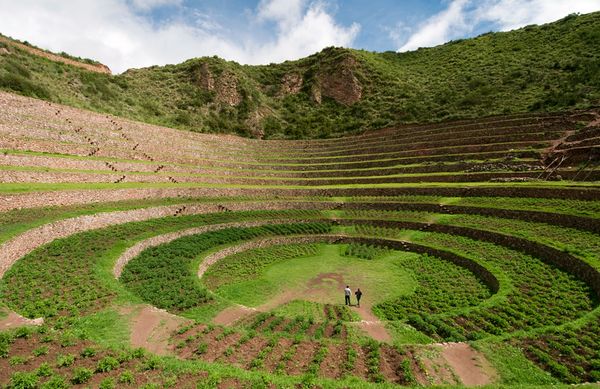 [Image: The weather bowl at Moray, Peru; photo by Ian Wood/Alamy, courtesy of
[Image: The weather bowl at Moray, Peru; photo by Ian Wood/Alamy, courtesy of 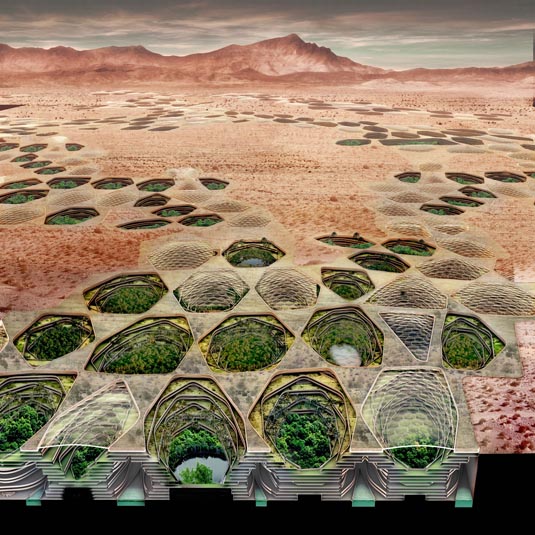 [Image: From
[Image: From 